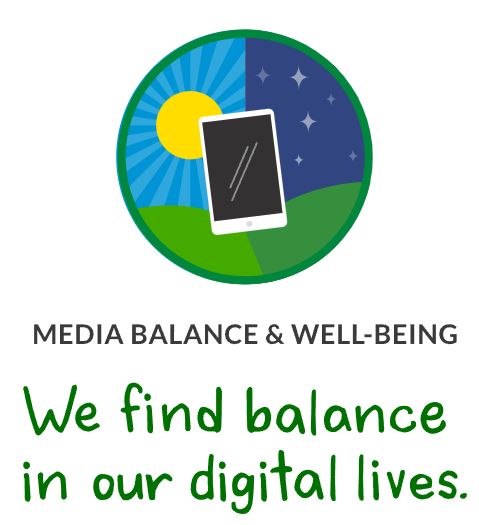 Division 5 is beginning to explore digital literacy and citizenship skills. We will be learning how to use technology in helpful ways, about our digital footprints and online privacy, how we interact with others, how to find information safely, and how we can keep a healthy balance between media and non-media in our lives.
Division 5 is beginning to explore digital literacy and citizenship skills. We will be learning how to use technology in helpful ways, about our digital footprints and online privacy, how we interact with others, how to find information safely, and how we can keep a healthy balance between media and non-media in our lives.
The following information is from Common Sense Education, a digital literacy resource I have been using for many years. You can also check out this family activity that can help with discussions around digital balance at home.
From phones and tablets to streaming movies and YouTube, tech and media are everywhere. Kids love easy access to shows, games, and information. Parents and caregivers love that kids can learn on the go (and stay busy when dinner’s cooking). But it’s easy to overdo it when the phone never stops pinging and the next episode plays automatically. Families can keep media and tech use in check by following a few simple practices.
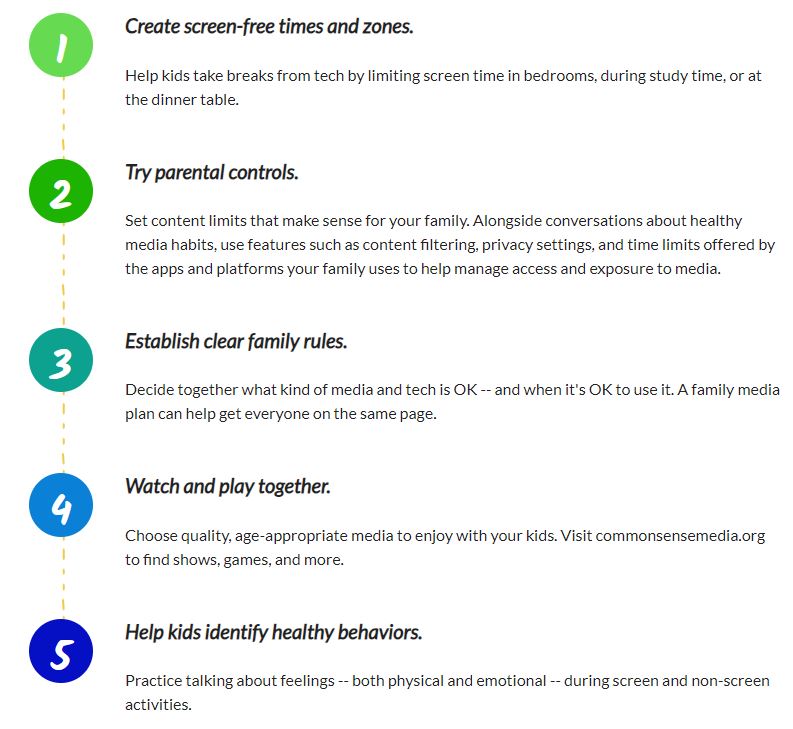


 Ms. Coutts
Ms. Coutts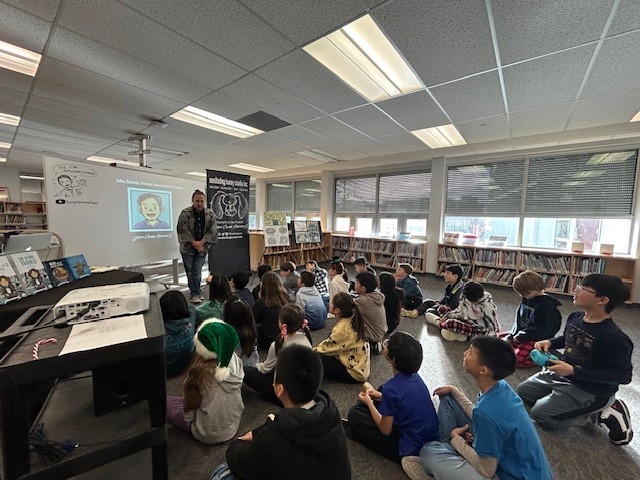 Author, filmmaker, and animator, Jeff Chiba Stearns, visited University Highlands today to talk about his art. We were particularly interested to hear about his newest book, On Being Yukiko, because we have been learning about the internment of Japanese Canadians during World War 2. On Being Yukiko explores Japanese Canadian family history and cultural identity, and how the impacts of displacement and racism echo into the lived experiences of people today. Jeff worked with artist,
Author, filmmaker, and animator, Jeff Chiba Stearns, visited University Highlands today to talk about his art. We were particularly interested to hear about his newest book, On Being Yukiko, because we have been learning about the internment of Japanese Canadians during World War 2. On Being Yukiko explores Japanese Canadian family history and cultural identity, and how the impacts of displacement and racism echo into the lived experiences of people today. Jeff worked with artist, 
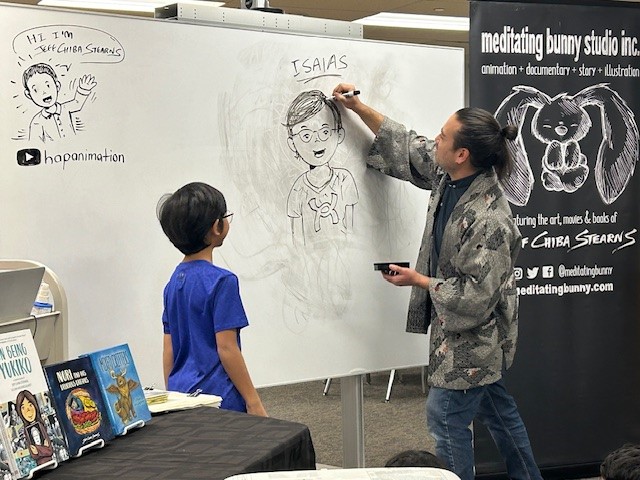
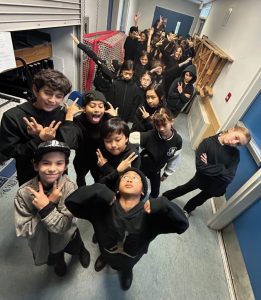
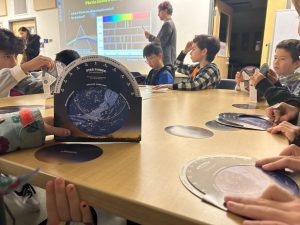

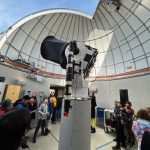
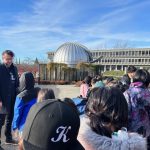
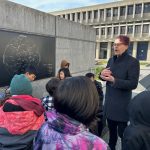


 The first model text is called The Important Book by Margaret Wise Brown. Each item in The Important Book is broken down to its essence–telling the reader all the most important things about that object. The author uses a lot of sensory detail when explaining, telling us what the thing sounds like, looks like, tastes like, etc.
The first model text is called The Important Book by Margaret Wise Brown. Each item in The Important Book is broken down to its essence–telling the reader all the most important things about that object. The author uses a lot of sensory detail when explaining, telling us what the thing sounds like, looks like, tastes like, etc.


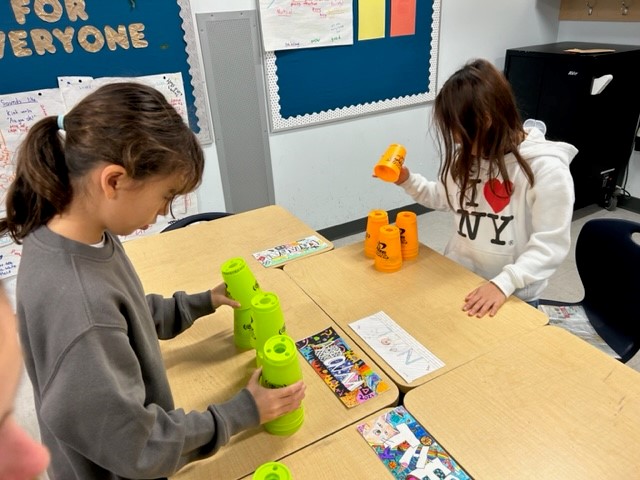 Sine the beginning of the year, Division 5 has been working on their Speed Stacking skills. It is a relatively new sport that is based on… that’s right… stacking cups!
Sine the beginning of the year, Division 5 has been working on their Speed Stacking skills. It is a relatively new sport that is based on… that’s right… stacking cups! Just as with any sport, there are particular rules that guide speed stacking. Division 5 has been learning these rules, and developing their muscle memory by learning the Competition Cycle (3-6-3, 6-6, 1-10-1). One of the rules of cup stacking is that the player must use alternating hands in order to set up each cycle of cups–this action of alternating hands actually strengthen the right and left brain connection. There are also competition events such as partner stacking where each person performs the actions of either the right or the left hand.
Just as with any sport, there are particular rules that guide speed stacking. Division 5 has been learning these rules, and developing their muscle memory by learning the Competition Cycle (3-6-3, 6-6, 1-10-1). One of the rules of cup stacking is that the player must use alternating hands in order to set up each cycle of cups–this action of alternating hands actually strengthen the right and left brain connection. There are also competition events such as partner stacking where each person performs the actions of either the right or the left hand.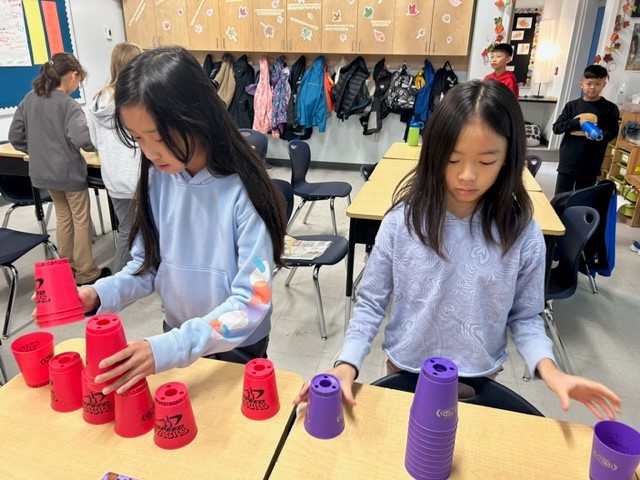 Division 5 has been focused on learning the cycle carefully to avoid fumbles and falls. Once students are familiar and fluent with the cycle, they will be developing their speed! It’s important to start with the fundamentals of a sport before adding in speed and power.
Division 5 has been focused on learning the cycle carefully to avoid fumbles and falls. Once students are familiar and fluent with the cycle, they will be developing their speed! It’s important to start with the fundamentals of a sport before adding in speed and power.